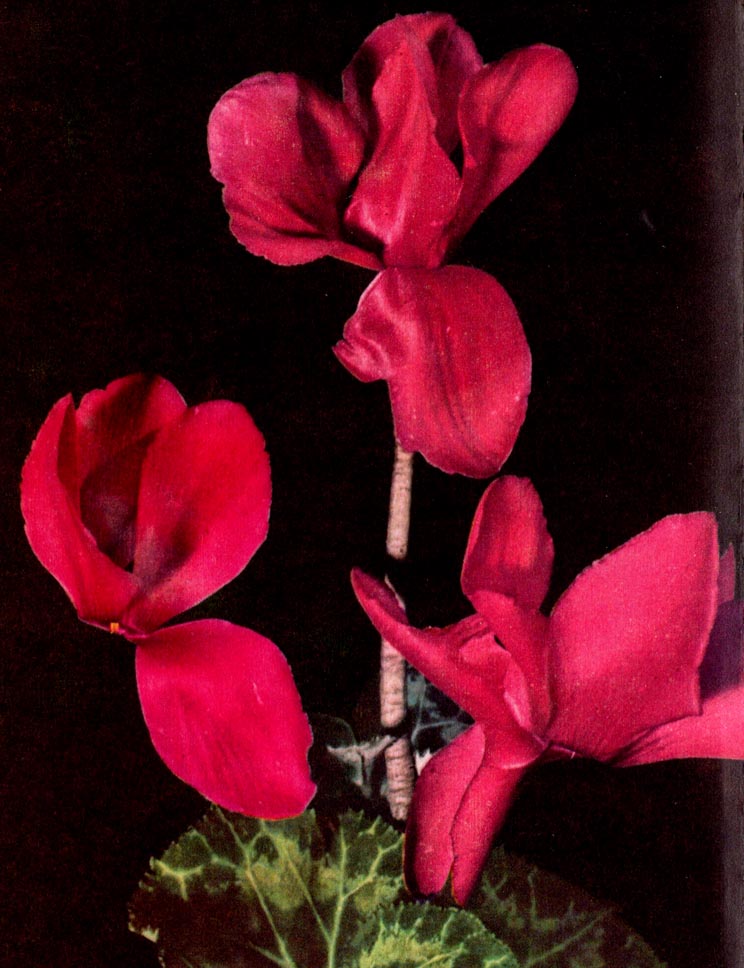 Cyclamen
Cyclamen
Cyclamen peach Mill.
family: Primelgewächse – Primulaceae
Name: Cyclamen (n.) from kyklos greek. = disc, circle or kyklaeminos Greek. = circular (refers to the circular shape of the tuber; peach, -a, -um years. = Persian.
origin: Eastern Mediterranean area (Greece, Palestine, southern Asia Minor). The first plants of the C. peach, which is regarded as the parent species of our indoor cyclamen, must 1656 from areas of the then Persian Empire (now Iran) been imported into France (hence the species name "Persian").
Heyday: November to March (but also from August).
Cultivation: From seeds (Sow usually from August to November).
Care requirements: Cyclamen, which are usually taken care of as flowering pot plants, need a lot of light during their flowering period, but only moderate warmth, if possible not over 10 °C should increase. They are therefore best placed between double windows, where they should be protected from drafts and full sun. For placement between windows with small gaps, plants are placed in narrow, high "double window pots".. During the flowering period, which can last for months in a cool and bright location, becomes regular – but with moderation – cast. This must always be done carefully around the tuber from above; wetting the interior of the plant easily causes leaf rot- and flower stalks. Under no circumstances should leaked irrigation water be left in the saucer or pot! A watering from below (see. S. 23) experience has shown that it is even cheaper, since the tubers cannot be wetted under any circumstances. Withered flowers and yellowed leaves should be plucked out (not to cut off, because the stumps are rotting!).
Special: Cyclamen can be cared for after flowering and will flower again the following year. Properly treated, Perennials bloom a little later than annuals, however particularly rich. After flowering, the plants go through a dormant period, in which the herb is allowed to die off completely. It is best to place the cyclamen in a dry place in the garden or in the basement and hardly water them. As soon as the first new leaves appear around mid-July, the old soil is shaken out and the tuber with nutrient-rich, repotted in loose soil. The pots now get a light color again, warmer space in the room and will – depending on rooting and budding -more and more poured. The first flowers appear again in early spring.